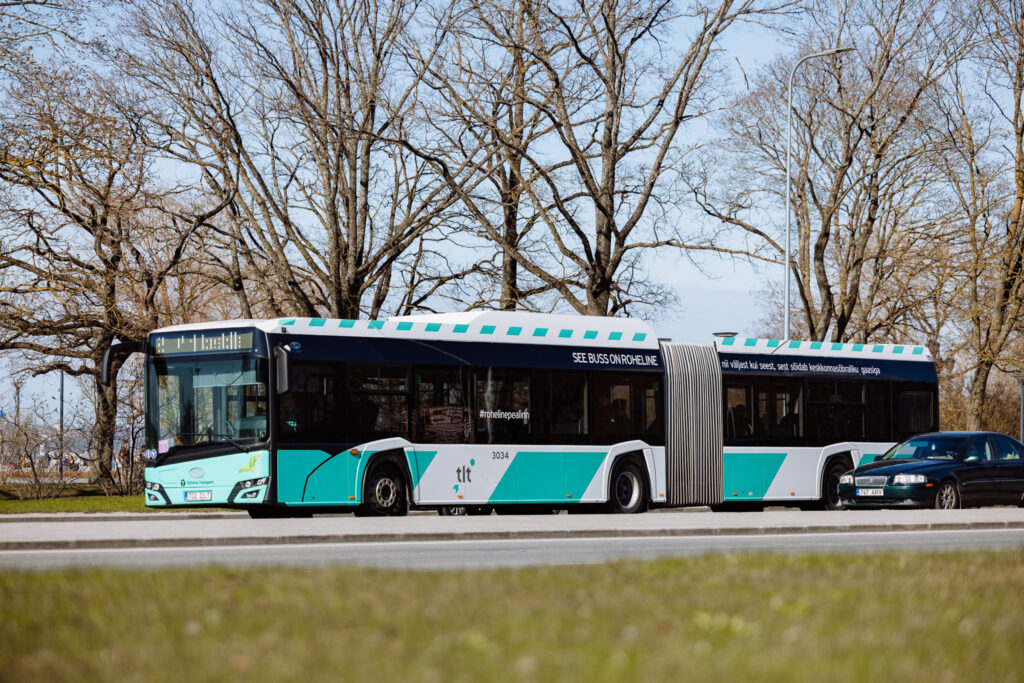Taking each other into account ensures safety in traffic

It is probably no surprise to anyone that when autumn arrives, traffic in the capital becomes more active – vacation time is over, school children start their school journey, and the number of cars in traffic increases. In turn, denser urban traffic means additional dangers that all road users have to face on a daily basis.
Drivers of public transport who spend most of their day in traffic are expected to have good stress tolerance and foresight in order to cope with unexpected situations and keep calm. According to Heigo Kõrge, the head of the traffic supervision department of TLT, the driver of a public transport vehicle must see and be able to assess the situation further in advance in order to avoid sudden braking, which in turn causes more falls in public transport vehicles. “Falls are a problem – there are too many of them,” admits Kõrge and adds that the number of accidents has recently been on the rise again, the causes of which are the general congestion of city traffic, nervousness, and haste.
Eha Villems, who has worked as a trolley driver for ten years and as a tram driver for the last 25 years, also admits that our city traffic has become much more frantic. “Drivers are careless, sitting on their phones and screens and not watching the traffic!” says Villems. This is why accidents happen so often between trams and other vehicles in Tallinn. Tram drivers must be especially attentive in our traffic and assess situations long in advance to avoid collisions because the braking distance of trams is longer compared to other public vehicles. The latest serious tram accident happened in the middle of August on the Tartu highway near the Central Market when a truck made a right turn across the tram road and collided with a tram moving in the same direction, causing serious damage to the tram. In addition, tram traffic was disrupted for several hours. Although occasional tram accidents take place on the Tartu highway, the tramway will not be redesigned; however, proposals have been made to increase safety, and they may be implemented in the future.
If we ask Eha what we, as drivers of public transport vehicles, could do to increase road safety, she admits that, unfortunately, not much can be done. “As drivers, we can do everything we can, but if fellow road users don’t take us into account, the traffic cannot be safe,” says Villems and points out the busy tram schedules as a concern. Many people travel by tram, and if the driver carefully follows the schedule to stay within it, it is inevitable that some passengers may be left behind or even get stuck between the doors. However, if you drive calmly and wait for every last person running to the tram, unfortunately, the tram will not stay on schedule. Therefore, to ensure safety, it would be good if the schedules were calm and took into account the traffic characteristics at different times of the day. On the other hand, a new problem may arise here, which is driving ahead of schedule, because our public transport vehicle drivers have different traffic experiences and seniority. TLT and Tallinn Transport Administration monitor the progress of our vehicles in traffic on a daily basis and make schedules through the “golden mean” that would be manageable for all drivers and meet the traffic conditions.
When you ask public transport vehicle drivers how safe they feel on the road, most, if not all, say they feel very safe. The new gas buses, CAF trams, and renovated KT4 and KT6 trams have a comfortable driver’s cabin equipped with various cameras, which gives a good overview of what is happening inside and outside the public vehicle. Cameras are a good tool for identifying the causes of traffic accidents and increasing the sense of security of our passengers and drivers. The great wish of public transport vehicle drivers for motorists would be to make fewer thoughtless maneuvers and unexpected changes of the lane in front of the public transport vehicle, which can often end in unexpected sudden braking. If all road users were more caring, helpful, and attentive to each other, our traffic would be much safer, and then every public transport vehicle driver would come to work with a much happier emotion.

